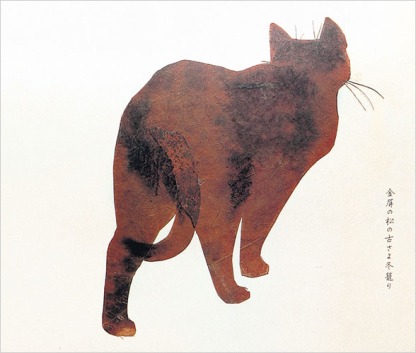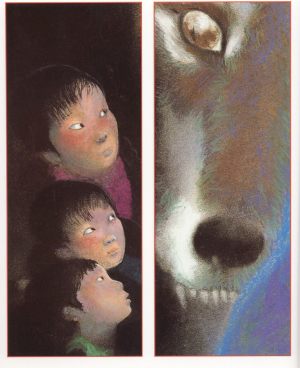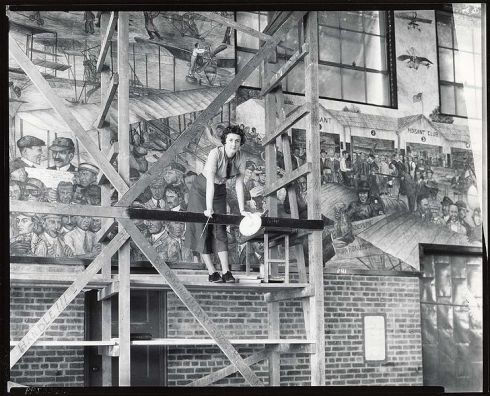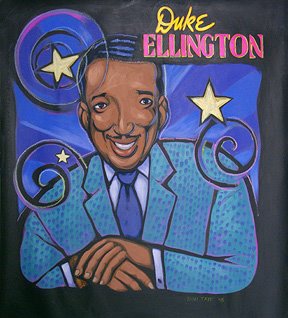
Collage illustrations
A cat’s journey to find the meaning of her name leads her from her Kyoto home to the pine trees at the foot of Mount Hiei.
And there from a wise Zen monk-ey, our questing cat learns ‘a way of seeing’ that is at the heart of the culture of her land.
Wabi Sabi, the Japanese and Tao zen concept that is also the cat’s name, ”finds beauty and harmony in what is simple, imperfect, natural, modest and mysterious.”
“It can even be a little dark, but it is also warm and comfortable.”
Wabi Sabi, by Mark Reibstein and renown illustrator Ed Young (published by Little Brown and Company) was named one of The New York Times “Ten Best Illustrated Books” of 2008.
A native of Tientsin, China who was a child in Shanghai during the World War II years, Young came to the United States in the 1950s and worked as a graphic designer before turning to children’s book illustration. He has illustrated 8o books, several of which he has written.
He has worked in many mediums, from authentic Chinese paper cuts to the soft, bright pastels of Lon Po Po, his 1989 telling of a Chinese “Red Riding Hood” fable, in which three sisters outwit a wolf who comes to their house. The book published by Viking Penguin imprint Philomel won the Caldecott Medal.
How To Be A Children’s Book Illustrator recently interviewed Young about his pictures for Wabi Sabi.
Here, Young employed standard and some not-so-standard collage techniques.
“I’ve always used it in doing other mediums, because it’s easier to lay out compositions and make decisions with collage,” he said from his home in Hastings on the Hudson, New York on a Saturday morning in early November.
(A collage is a work of art created by gluing bits of paper, fabric, scraps, photographs or other materials to a flat surface, often combining the imagery with painting and drawing. Young has cited the collage designs of Henri Matisse as a major influence on his work.)
“It’s easier to change around, nothing is permanently pasted down,” Young said. “It’s flexible and alive. With other mediums you often get tight too quickly, then you get attached to it and it’s hard to change. Collage was something I used for sketching in the past. Now I use it to finish my work.”
Conversely, he drew pencil thumbnails in his sketchbook to get the idea formation process going for Wabi Sabi. When he begins to work on an actual collage illustration, Young will place an item such as “a piece of bow” on the paper, and adds from there. For this he keeps several boxes of scraps, ribbons, colored tissue — arranged in color schemes.
“I work flat until they are arranged in a way that’s satisfactory, then I’ll fix them to the paper with a little dab of Gluestick on the corner so the pieces won’t fly all over the place.
“It’s really play. You don’t get down to make something firm until the [pieces] start to talk to you. Then you listen. “

“Illustrating children’s books is like making a movie,” Young said. “You’re making a series of pictures that tell a story. Those pictures are also like words made by you to lay out the moods.
“When you have the pictures together it’s like phrases. The phases have their own spirit and that becomes a poem of some sort — if they hang together right. But it’s very different than making a singular picture.
“In the concept stage, I am placing things down to start telling the story. Then several stages down the line, I introduce the colors. I play around with colors when the composition is right.
“These [colors and shapes] shift around. They have to work with the page. They have to flow from one to the other one so that when you flip the page, you’re either surprised by something, or staying in the mood for the next picture.”
The sequence is something to behold in Wabi Sabi. The viewer does indeed feel like he’s moving from mood to mood, experiencing all the contrasting sights and emotions, epiphanies and wonderment of this cat on her journey to find who she is.
The story behind the illustrations should be made an epilogue to the book in the second edition.
Young’s first set of illustrations, which took him two years to complete, mysteriously disappeared after he dropped them off on the front porch of his agent’s house.
(While taking his wife to the hospital, Young had dropped the bundled illustrations in an envelope at the agent’s doorstep, but they never showed up at the N.Y.C. office of his editor Alvina Ling. The agent never saw the package. Police and parcel delivery services were called. Locations were scoured to no avail.)
A few months later, when everyone came to grips with the idea that the art truly was lost, he had to start over with only weeks until his deadline. In the meantime, his wife had just died of cancer. “I was in crisis mode,” Young said.
He had already cleaned out and re-organized his studio. The brightly
colored paper and tissue scraps and slivers that had been the raw materials for his pictures were gone. He had also tossed all of his visual references — except for some angled, distorted snapshots that Ling had made of the collages in his studio.
By now, though, Young knew that in his second go-around he would take a radical approach.
The look of the book would be quite different.
“Wabi Sabi is a term used for celebrating the common things that people overlook and seeing beauty in them,” Young said. “When I did the first round, I used beautiful new things, many done from scratch. And fresh things, although the pictures were beautiful, didn’t really develop the idea of wabi sabi.
“So when I started my second version, I decided to use wabi sabi materials.
“Wabi Sabi does not occur when something is newly made because it hasn’t got to that point where the soul is revealed. New things don’t have stories to tell.
He would have to work very fast. He recruited his 12 year old daughter to help him.
“In the end papers, you see cat foot prints, for example. When they were pouring concrete on my garage driveway, the cat actually walked on it. I wanted the images because that said something about the journey. So I had my daughter photograph that.”
Pine needles that Young’s daughter brought home from summer camp clump and adorn the trees of the forest on the book’s back cover and elsewhere in the pages. (In the original first set of collages, the pines were merely tree stem shapes cut from colored paper.)
The tree bark texture is actually from a large weatherworn outdoor thermometer in his back yard.
(Young is fond of this artifact.)
The autumn leaves on pps 17-18 are … autumn leaves, collected by Young and his daughter.
Other bits of photographed foliage and nature and urban scenes were –in time honored collage tradition — clipped from the covers of Smithsonian and other glossy magazines.
The bamboo leaf shapes are scissored from real corn husks. A rug mat the cats in the story sleep on is made of lint scraped from the Youngs’ clothes dryer. The speckled cover of a college composition book provides the textured background for our cat heroine in one of Wabi Sabi’s epiphany moments near the conclusion.
The mottled brown pattern of the cat herself throughout the book comes from the rusted surface of a portable cook stove Young owns.
All of these materials — the leaves, the pine needles, the dryer lint, even the big thermometer and the stove! –were taken down to a neighborhood copy shop, layed on top of the glass of a color Xerox machine– and photocopied! (”It probably isn’t something you could do at Staples,” Young offered.) Then he and his daughter merely cut around the myriad shapes and patterns in the color copies — to create the images for the story.
“I try to take the time to find the soul of a story I illustrate,” Young said. “And, well, Wabi Sabi gave me the theme I needed to make use of that challenge,” Young said. “We were using things people have discarded, things people don’t want to celebrate. And I was reminded that this — and everything — is part of a process.
“With illustration, it’s no different. If I lose this set, I’m not the same person any more — so I’ll do another set. One round is one telling. The next round is another telling. I’m just finished for this round.
“The lesson is that nothing is frozen. If the book is ever to be made again, it can be retold by another person in a different way. And it could be just as good, or better.”
* * * * *
The missing set of originals have been alluded to in press releases, a review in School Library Journal and other sources. I got additional details from Mr. Young and a video he loaned me of a talk he gave this fall at the Hastings on the Hudson Public Library. The talk was in conjunction with an exhibit of the Wabi Sabi artwork at the library — All the art, Both sets!. The once-missing original pictures showed up almost a year after they disappeared — in a Lutheran church where Young teaches Tai Chi classes!
“I’ve had Individual pieces of my art that were lost before, and even whole sets of illustrations.
But I never had a set of illustrations that was lost — and then found!” Young told his appreciative library audience.
* * * *
My warm thanks to Mr. Young, Tara Koppel with Raab Associates Inc. and Celia Holm, Children’s Librarian at the Spicewood Springs Branch of the Austin Public Library for their help with this article. Mark Mitchell

Lon Po Po (inside illustration)





















































[...] More here: When kids' book illustrators go wild… « How To Be A Children's … [...]